Field of Glory II Dev Diary - Game ModesHere we are today to have an in-depth look on
Field of Glory II's
Game Modes.
FOG2 has a number of game modes, designed to give the maximum amount of variety and replayability.
TutorialThe tutorial is in the form of three hypothetical battles between historical opponents – Ancient British vs Romans, King Pyrrhos of Epeiros vs Carthaginians, and Hannibal’s Carthaginians vs Romans.
These are actual battles rather than being “on rails” so that the new player can get a real feel for the game. However, they have lots of context-appropriate popups that demonstrate the UI and rules as the game is played.
Skirmish ModeThis is something of a misnomer, as the battles generated are full-sized battles. We therefore call them “Custom Battles” rather than skirmishes.
The armies are chosen from more than 75 different army lists, each fully historically researched and covering one of the 48 nations/states in the game for a defined period of its history. The player can elect to play a pot luck game between two historically matched armies, or select his and/or the enemy army list.
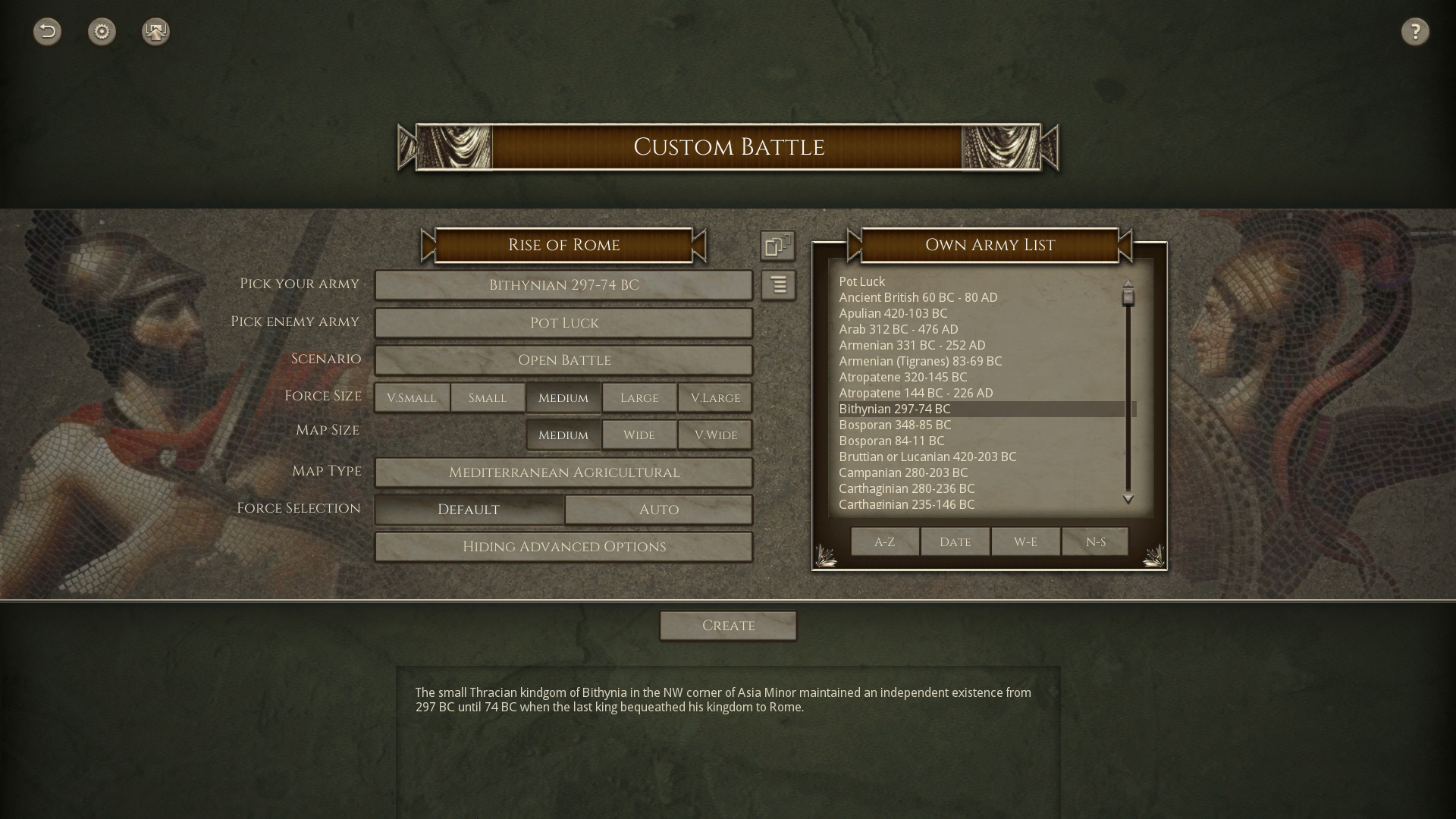
By default, the list of enemy armies is filtered by date and geography against the player’s selected army, although these filters can be turned off to allow what-if battles between opponents that never met historically.
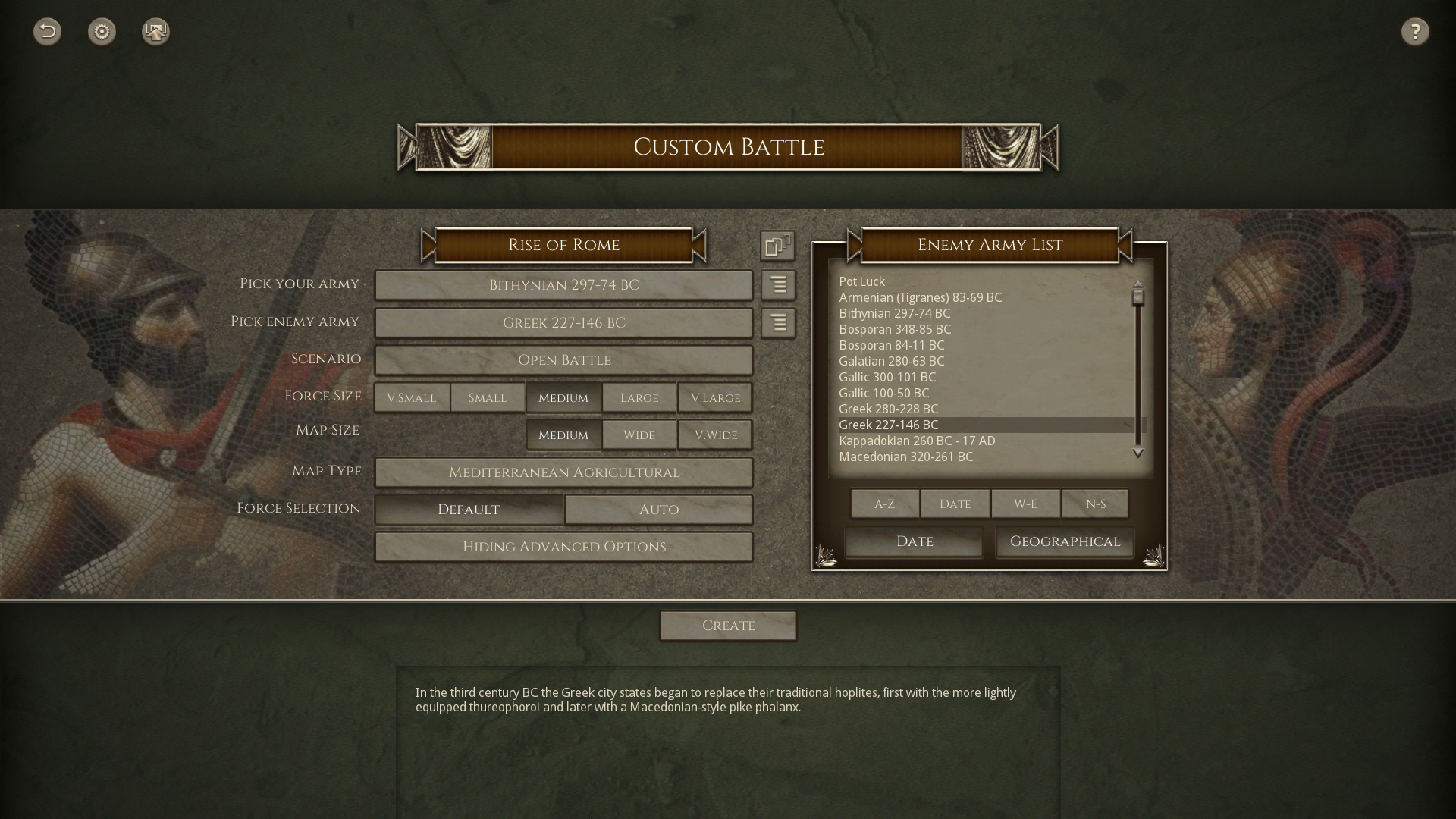
The army lists are designed to make each army resemble its historical prototype, and define which units that nation’s army can use within the specified date range. The minimum and maximum numbers of units of each type are adjusted according to the size of the battle.
Each army list can be previewed from the custom battle screen.
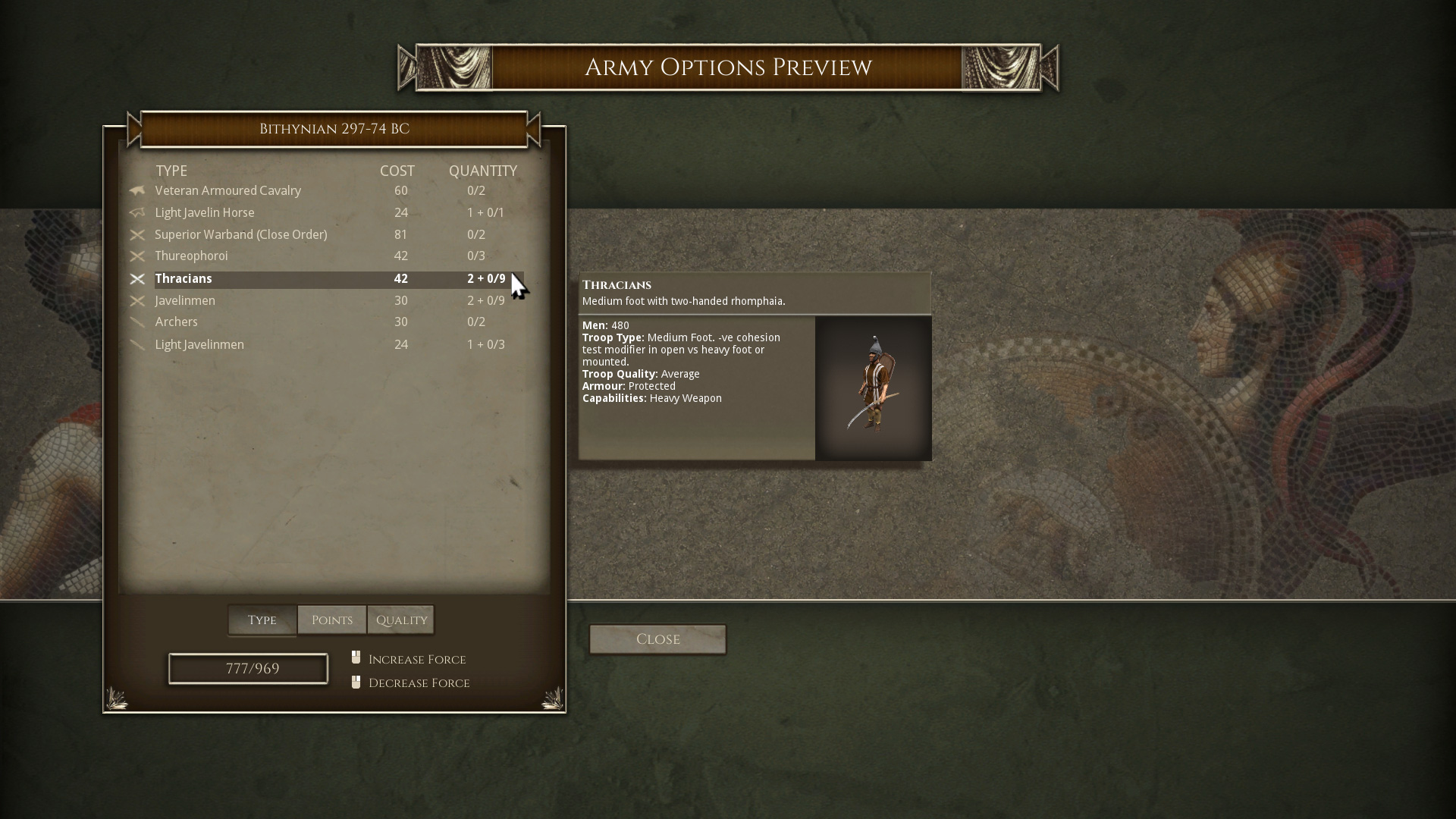
Custom battles have a choice of eight different scenario types.
• Open Battle - Both sides are eager for battle on an open battlefield.
• Reinforcements (Enemy) - The enemy is expecting reinforcements. Best defeat him before they arrive.
• Reinforcements (Own) - You are expecting reinforcements. Can you hold the enemy off until they arrive?
• Send Flank March - You have decided to send part of your forces on a flank march, to catch the enemy at a disadvantage. Alternatively he might overrun you before they arrive. (There is no scenario selection to make the enemy send a flank march, but they may choose to do so in any of the other scenario types.)
• Rearguard - The enemy are advancing with overwhelming force. You have been left in command of a rearguard, with orders to slow down the enemy advance to allow the rest of our army to escape. You must hold out for as many turns as possible. (Survival Mode).
• Advance Guard - Your army and the enemy army have blundered into each other on the march. The main armies will not arrive before nightfall. You must make best use of your advance forces as they arrive to secure the battlefield before nightfall, whatever the cost.
• Remove the Head - The enemy are led by a charismatic C-in-C. If you can kill him, they should break. Of course, you also need to protect your own C-in-C.
• Escort Baggage train - Your army is advancing through hostile territory. You must protect your baggage train at all costs, otherwise your army will be forced to withdraw. Your task is to get at least half of your baggage train safely to the far side of the map before nightfall, while avoiding defeat by the enemy forces.
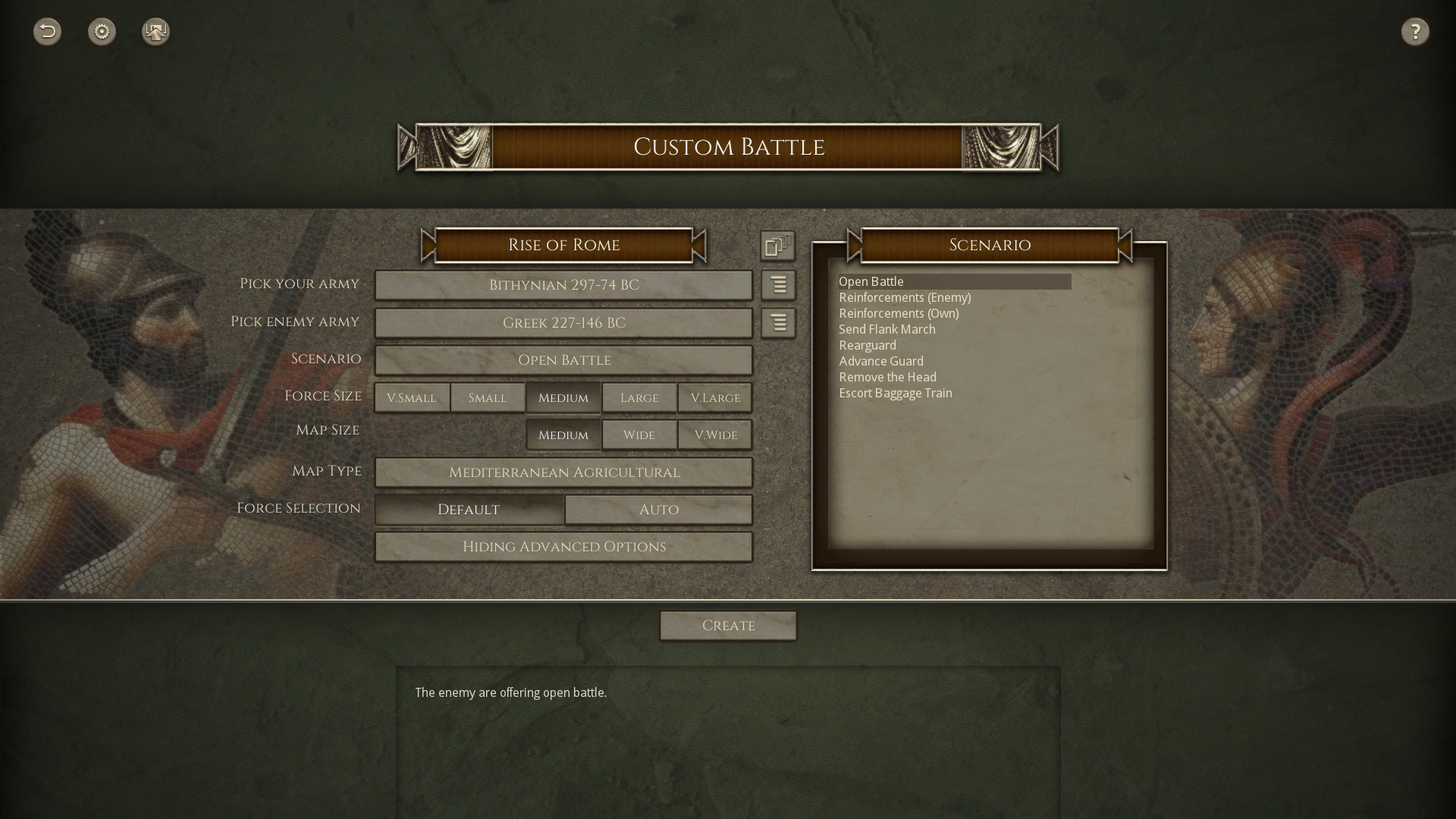
Custom battles are fought on randomly generated maps using a sophisticated random map generator that will generate realistic maps for agricultural, hilly, wooded and mountainous areas in Mediterranean, North European or Middle-Eastern climatic regions. Also steppe, desert and tropical areas.
 Quick Battles
Quick BattlesThis is a special skirmish mode which allows you to very quickly set up a small battle between historically opposed armies without going through the full custom battle setup process.
If you don’t even have time to pick a matchup, there is a “Fight Now!” button in the battle menu that will randomly pick a quick battle from the list of available ones and set up the battle completely automatically.
Epic BattlesThe game comes with 12 preset historical scenarios closely based on some of the most important battles of the era. These include Bagradas 255 BC, Trebia 218 BC, Cannae 216 BC, Ilipa 206 BC, Zama 202 BC, Magnesia 190 BC, Pydna 168 BC, Chaironeia 86 BC, Tigranocerta 69 BC, Bibracte 58 BC, Carrhae 53 BC and Thapsus 46 BC. The player can play as either side.
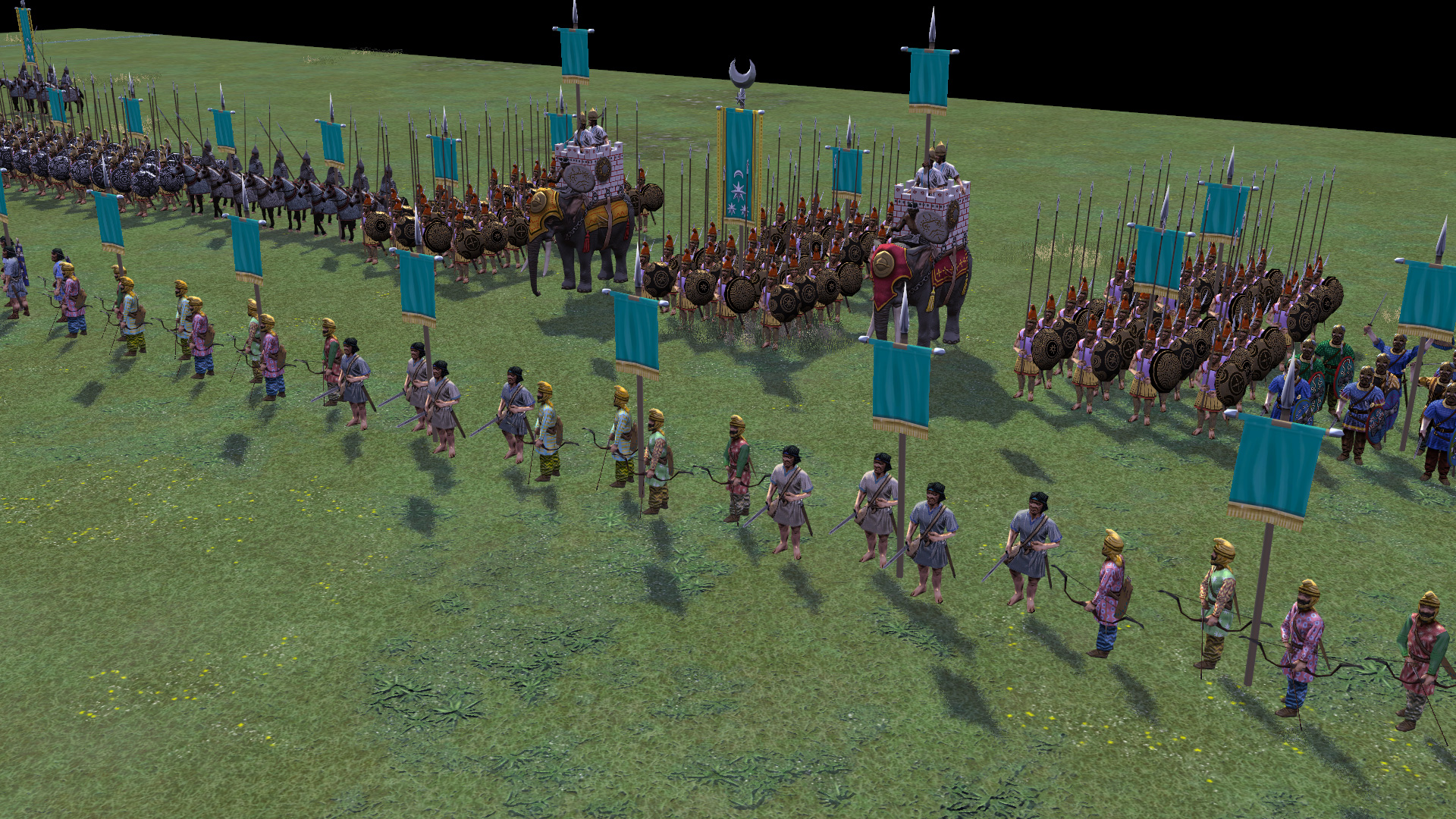 Campaigns
CampaignsCampaigns allow you to fight a series of connected battles, with the core of your army progressing from one battle to the next, gaining experience and elan with each victory.
Field of Glory II is really all about the battles. Therefore, instead of having a simplified strategic map with a lot of marching back and forth between battles, which some people do not enjoy, we have decided to cut out the map movement and allow strategic decisions to be made quickly before hopping straight on to the next battle.
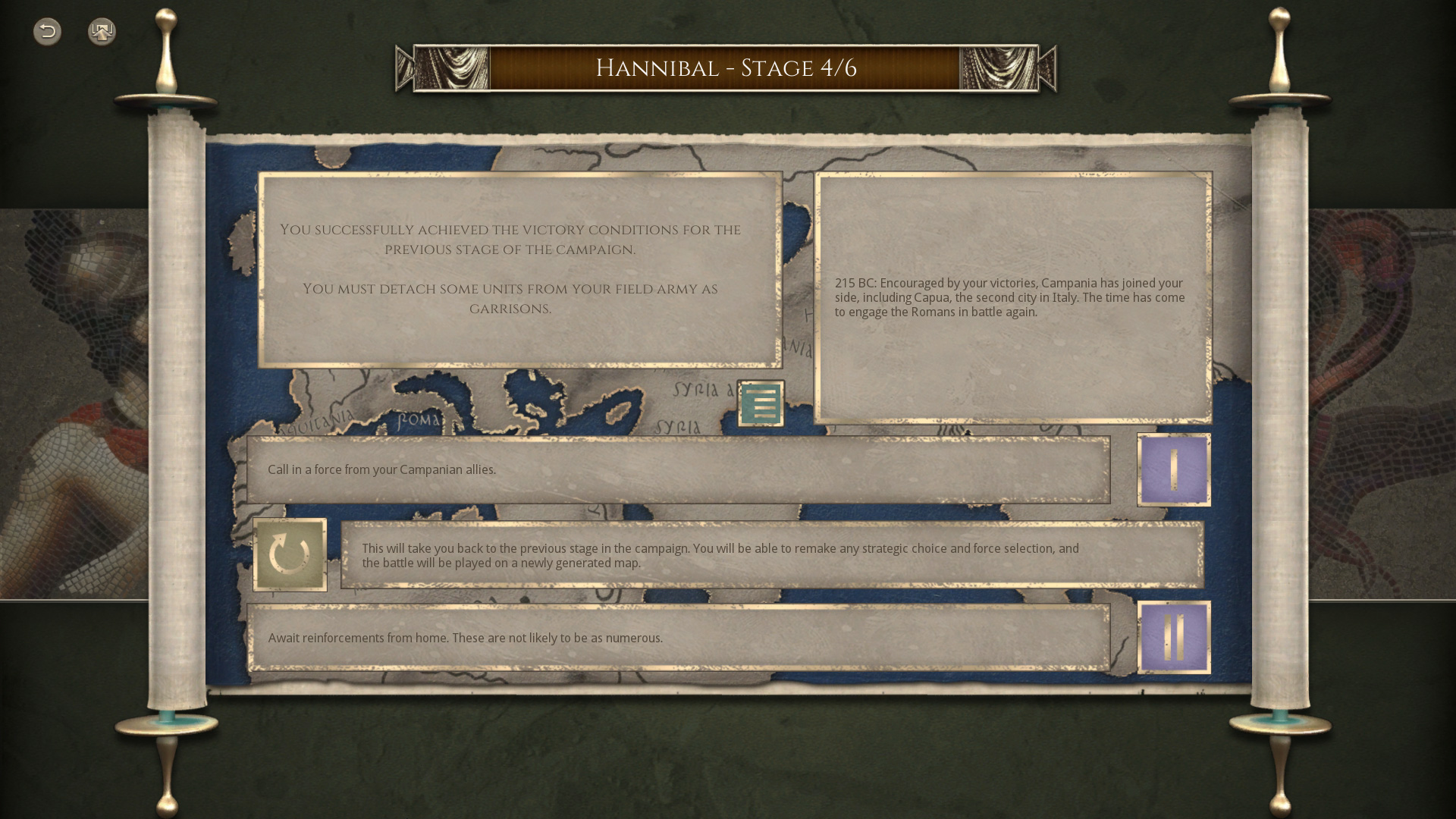
Here are some examples of strategic options that may occur in the campaigns.
The enemy are retreating to join up with reinforcements:1. Pursue them with your advance guard and engage them before they can join up with their reinforcements.
2. Let them escape this time and continue your advance at a steady pace.
You are advancing through enemy territory. Your choice of routes is limited: 1. Advance through wooded territory. You will need to protect your baggage from attack.
2. Advance through mountainous territory. The enemy forces are expected to be assisted by the local mountain tribes.
Your territory has been attacked from an unexpected direction by another enemy army: 1. Fight them with your rear echelon forces. (A new army chosen by the AI from your nation’s army list, weighted towards lower quality troops).
2. March to meet them with your field army. You will not have time to replace your losses from the last battle.
Your territory has been attacked from an unexpected direction by the enemy's Bithynian allies: 1. Fight them with your rear echelon forces.
2. Call in your own Galatian allies to meet them in battle.
You feel you need additional forces in order to progress the campaign: 1. Call in a force from your Bruttian allies.
2. Await reinforcements from home. These are not likely to be as numerous.
The Romans have received help from their Spanish allies, but their armies have not yet joined up. You have the opportunity to defeat one of their armies before they can combine: 1. Engage the Spanish army.
2. Engage the Roman army.
Sandbox CampaignsThese allow you to fight a campaign between any two nations. Their historical allies may join in. Setup is similar to that for Custom Battles.
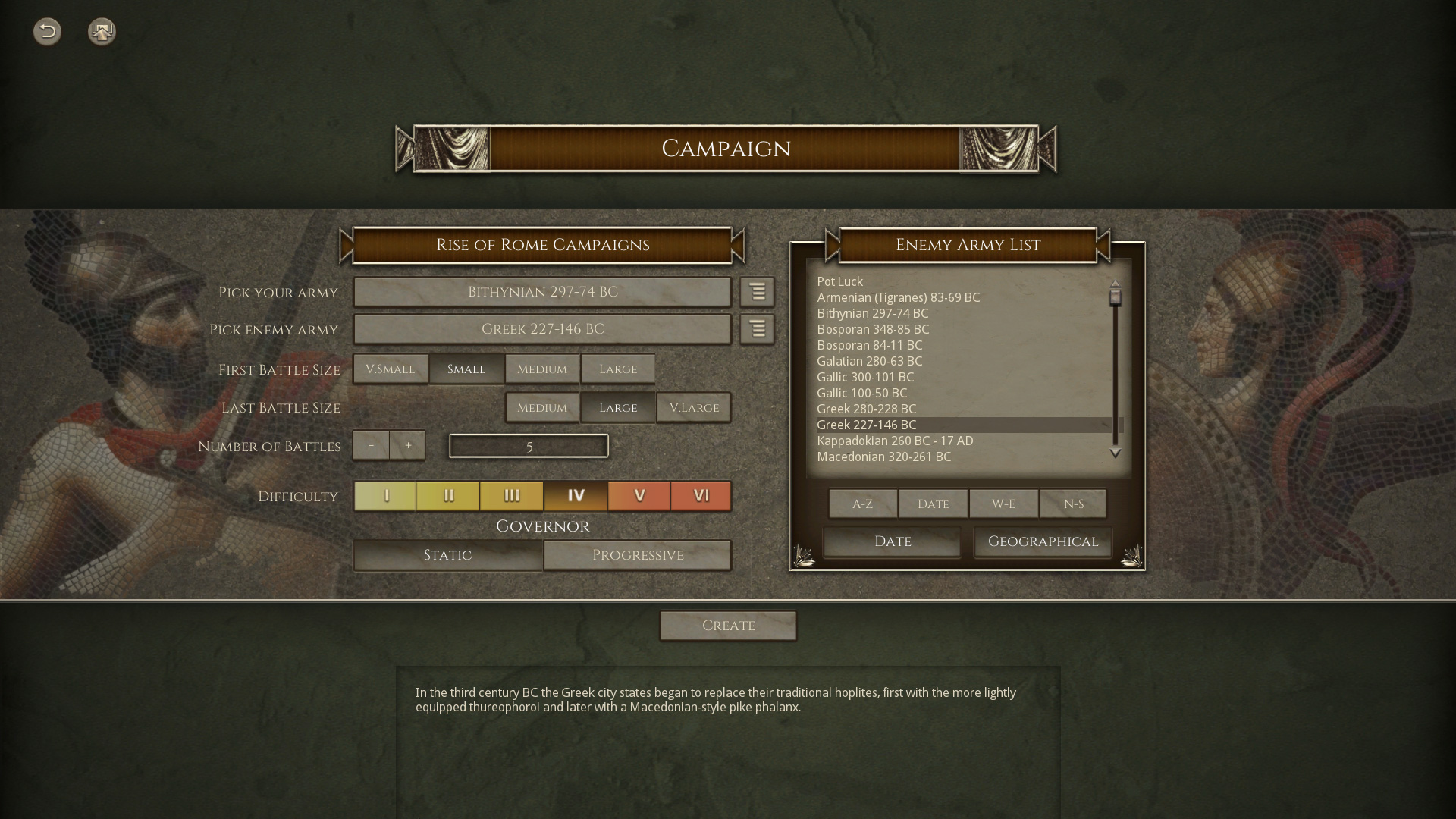
Armies are chosen from the appropriate army lists (or allied army lists) and the terrain is generated using the regions appropriate to the opposing nations. The player’s core units continue through the campaign gaining experience and elan after each victory
Historically Based CampaignsThe game also comes with four historically-based campaigns, based on the military careers of Pyrrhos of Epeiros, Hannibal, Mithridates VI of Pontus and Julius Caesar.
These still use army lists and generated maps for the battles, but are scripted so that the historical sequence of events is followed, including historical strategic choices. This allows the campaign to follow the historical events in general terms, but ensures that the actual battles will play out differently each time the campaign is played. Essentially each battle represents the battle that might have occurred if (for example) the Battle of Trebia had been fought a few days earlier or later on a different battlefield nearby – but with the historically opposing armies and similar orders of battle.
The campaign system is designed so that it should be quite easy for users to set up historically-based campaigns that can in due course be added to the library of user- created content that can be downloaded within the game. No programming ability is required, all of the campaign scripting is in plain English in a text file.
MultiplayerThe game uses Slitherine’s PBEM++ system to allow Epic and Custom battles to be fought by two players. All setup and data transfer is handled seamlessly by the program.
The system does not require you to organise games in advance; you do not even need to be online at the same time as your opponent. It is as simple to play as a single player game, removing all the barriers to entry of other multiplayer games.
Turnaround is essentially instantaneous, so you can either play a battle in one session, or in a more leisurely fashion whenever time permits.









 Similar topics (5)
Similar topics (5)